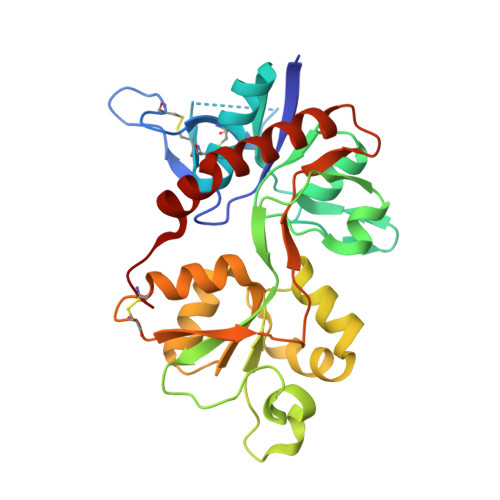Ligand-specific deactivation time course of GluN1/GluN2D NMDA receptors.
Vance, K.M., Simorowski, N., Traynelis, S.F., Furukawa, H.(2011) Nat Commun 2: 294-294
- PubMed: 21522138
- DOI: https://doi.org/10.1038/ncomms1295
- Primary Citation of Related Structures:
3OEK, 3OEL, 3OEM, 3OEN - PubMed Abstract:
N-methyl-D-aspartate (NMDA) receptors belong to the family of ionotropic glutamate receptors that mediate a majority of excitatory synaptic transmission. One unique property of GluN1/GluN2D NMDA receptors is an unusually prolonged deactivation time course following the removal of L-glutamate. Here we show, using x-ray crystallography and electrophysiology, that the deactivation time course of GluN1/GluN2D receptors is influenced by the conformational variability of the ligand-binding domain (LBD) as well as the structure of the activating ligand. L-glutamate and L-CCG-IV induce significantly slower deactivation time courses compared with other agonists. Crystal structures of the isolated GluN2D LBD in complex with various ligands reveal that the binding of L-glutamate induces a unique conformation at the backside of the ligand-binding site in proximity to the region at which the transmembrane domain would be located in the intact receptors. These data suggest that the activity of the GluN1/GluN2D NMDA receptor is controlled distinctively by the endogenous neurotransmitter L-glutamate.
Organizational Affiliation:
Department of Pharmacology, Emory University School of Medicine, Rollins Research Center, 1510 Clifton Road, Atlanta, Georgia 30322-3090, USA.















